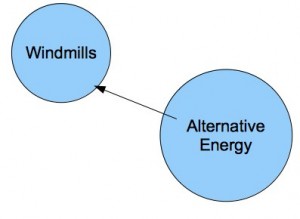- Questioning: See assignments below.
- The Information and Communication Technology (ICT) topics below may be too broad to research for a 3 paragraph essay. Brainstorm 2 or 3 more specific questions.
- Review the Web Search In Plain English video. Create a list of words or phrases to begin an Internet search. Keep track of the words and phrases you use.
- Find the definitions of words you don’t know. Locate 1 or 2 possible sources of information.
- Narrow the topic to a more specific question. Your final question may not include what or how many. It should allow you to develop a deeper understanding of the topic. Submit a question by the end of the class 1.
- Planning:
- Refine your list of keywords and phrases to use in a search. Keep track of this list in the word-processing document. document.
- Decide where to search. Remember the Deep Web.
- Gathering:
- Collect and record information from at least 2 reliable and valid sources of information. Use the 5 W’s to evaluate information sources.
- Create a bibliography entry for the resources you find. Use EasyBib to create a citation for each with an annotation. Placee these in the word-processing document. You will print and hand in the research question, list of keywords and phrases, plus a description of what search engine used, plus the bibliography with annotations by the end of class 2. The bibliography entry must be in hanging indent format. The annotation must be a bullet point under the bibliography entry.
- Sifting & Sorting & Analyzing:
- Take notes to support your topic. Organize the notes by information sources so you can correctly provide in-text citations later.
- Synthesizing & Evaluating:
- Develop an outline of the topic (see report below) The notes and outline will be printed and handed in at the end of class 3.
- Reporting: Communicate findings in written report. (3 paragraph minimum) Printed and handed in on class 4.
- Paragraph 1: Introduce the topic with a supported thesis statement.State the problem and your question. Paraphrase. Do not copy and paste.
- Paragraph 2: Provide specific examples to support your thesis statement. The examples to solve the problem. It must be supported by your research and from valid, reliable, appropriate information sources. Paraphrase. Do not copy and paste. One sentence may be a direct copy, but must be included within quotation marks.
- Paragraph 3: Your personal reflection as a Catholic student at ICS: How does this topic personally impact you? Paraphrase. Do not copy and paste.
- Intext citations for all information used are required.
- Formatting
- Your name, the Class Name and the date at the top left of the paper.
- Research question in bold, centered. Times New Roman size 18
- Paragraphs and bibliography in Times new Roman size 12, left justified. Do not indecnt paragraphs.
- Place one space after periods, commas, and questions.
- Spell check, Grammar check.
- Bibliography: Place the bibliography directly below the essay. Each bibliography entry must has a bullet point annotation explaining the validity of the information source. The bibliography entries must be in alphabetical order.
- Use EasyBib website to create the bibliography entries in MLA style.
- Use EasyBib website to create the bibliography entries in MLA style.
Assessment will be based on the 6-Traits Writing Rubric and the Research Rubric located in the Documents tab on Sycamore. On the 6-traits rubric, you will assessed on Ideas, Organization, Voice and Conventions.
- ‘Telecommuting’ refers to workers doing their jobs from home for part of each week and communicating with their office using computer technology. Telecommuting is growing in many countries and is expected to be common for most office workers in the coming decades. How do you think society will be affected by the growth of telecommuting?
- Technology is making communication easier in today’s world, but at the expense of personal contact as many students choose to study at home in front of a computer screen.
- What dangers are there for a society which depends on computer screens rather than face-to-face contact for its main means of communication?
- Internet: Could you be without it? Discuss.
- Telephone: Coud you be without it? discuss..
- The internet has great influence in shaping people’s ideas. To what extent do you agree or disagree this statement? Give reasons for your answer.
- Does the Internet bring people of the world closer together?
- Computers can translate all kinds of languages well. Do our children need to learn more languages in the future?
- Smart phones are the solution to the digital divide (digital inequality). Discuss.
- Not all countries allow or value freedom of the press. How does technology change a country’s ability to monitor information?
- You walk past a coffee shop and get an offer of a 10% discount on your smartphone. Discuss the advantages and disadvantages of location tracking (or data mining or geotracking) ,
- Discuss the difficulties in censoring the flow of information in a society.
- Tweets, 140 characters at a time, can change the way society reacts. Discuss.
- All lectures in schools should be distributed as podcasts. Discuss pros and cons.
- Webapps enable students to collaborate and communicate which could reduce the amount of time needed in class. Discuss.

